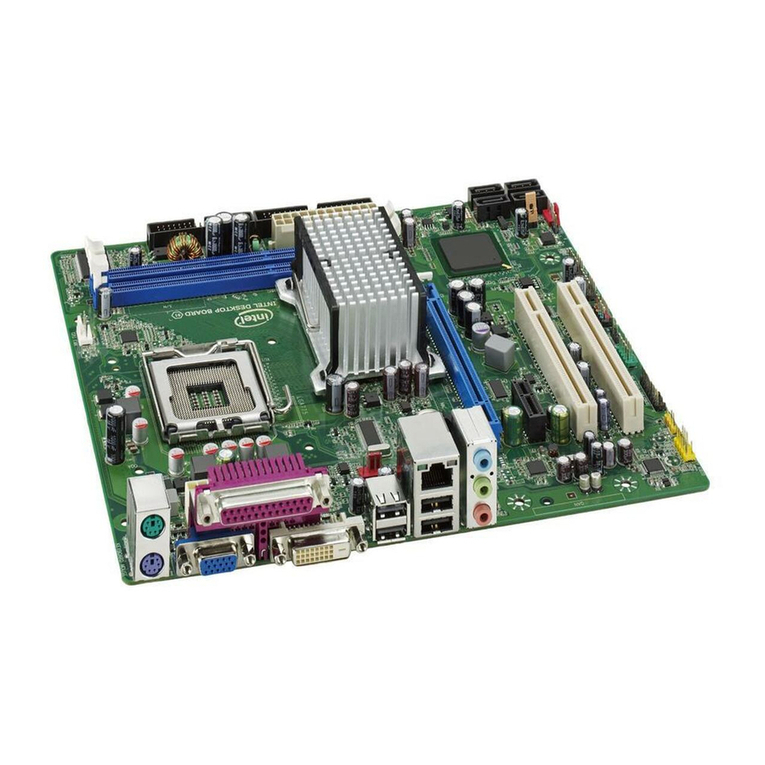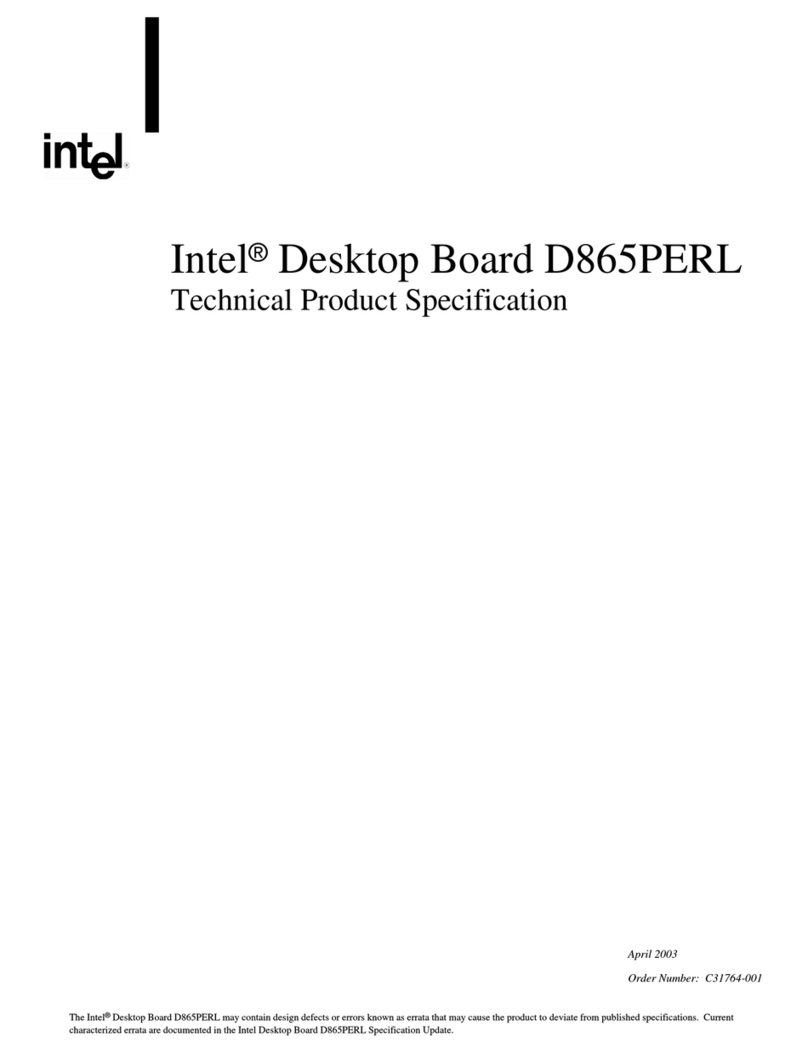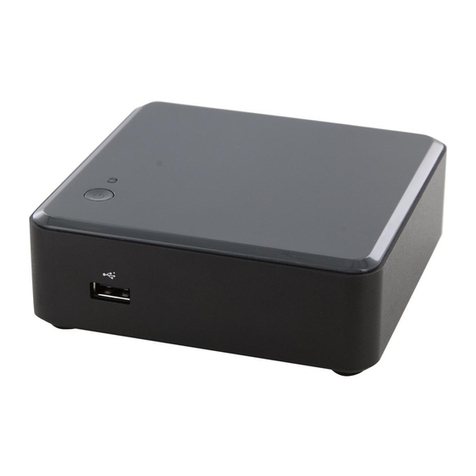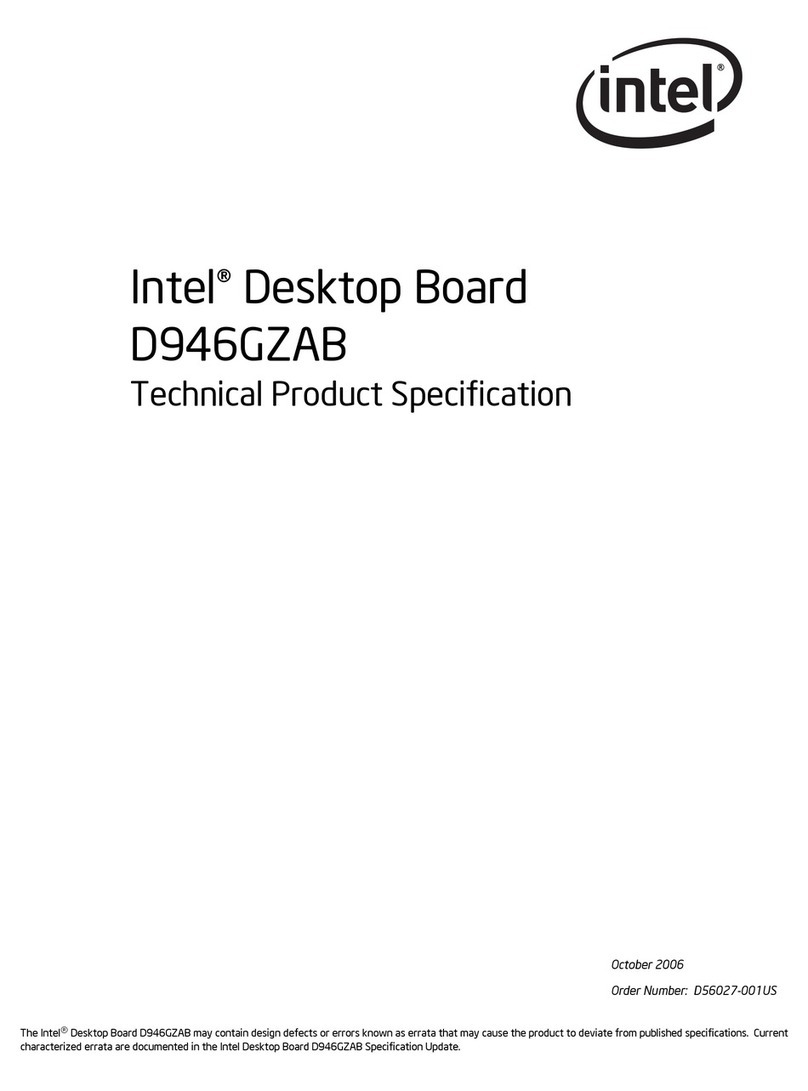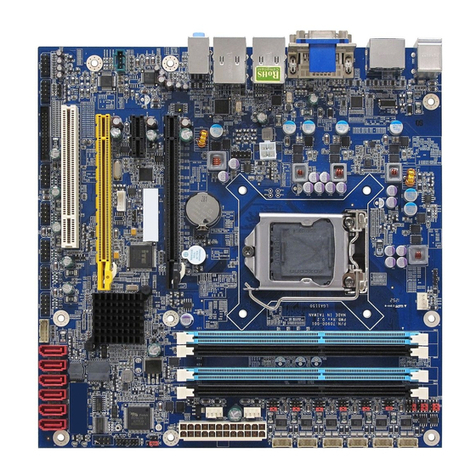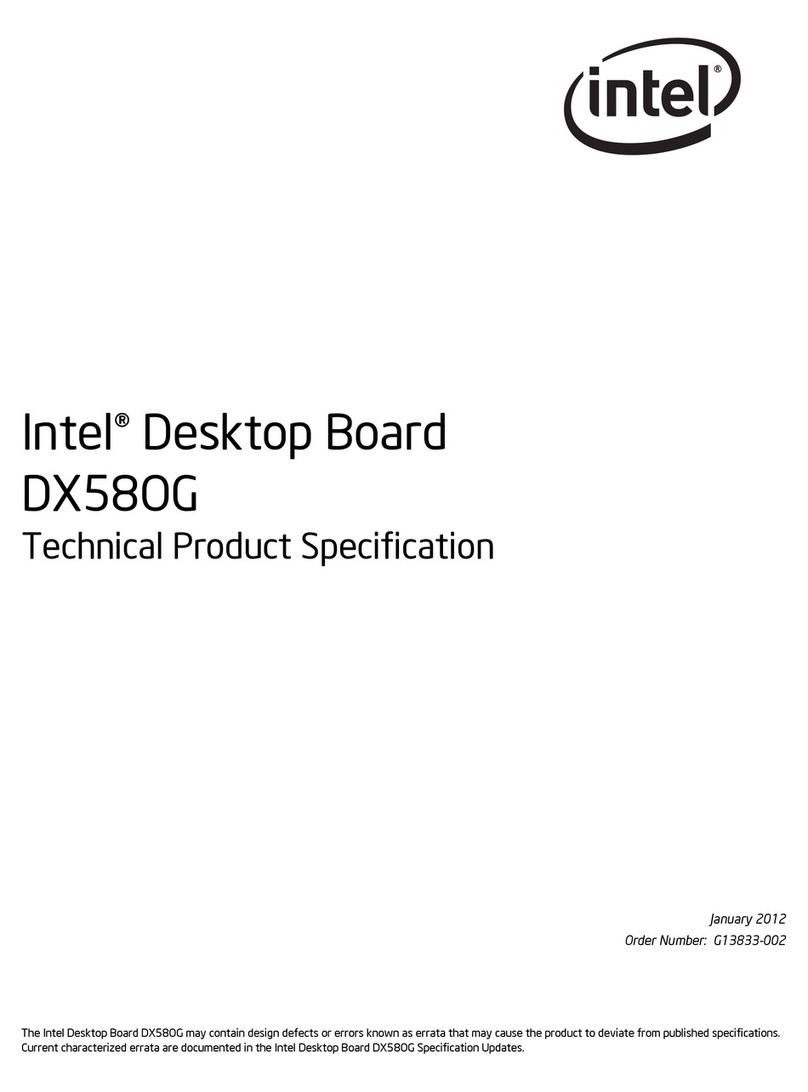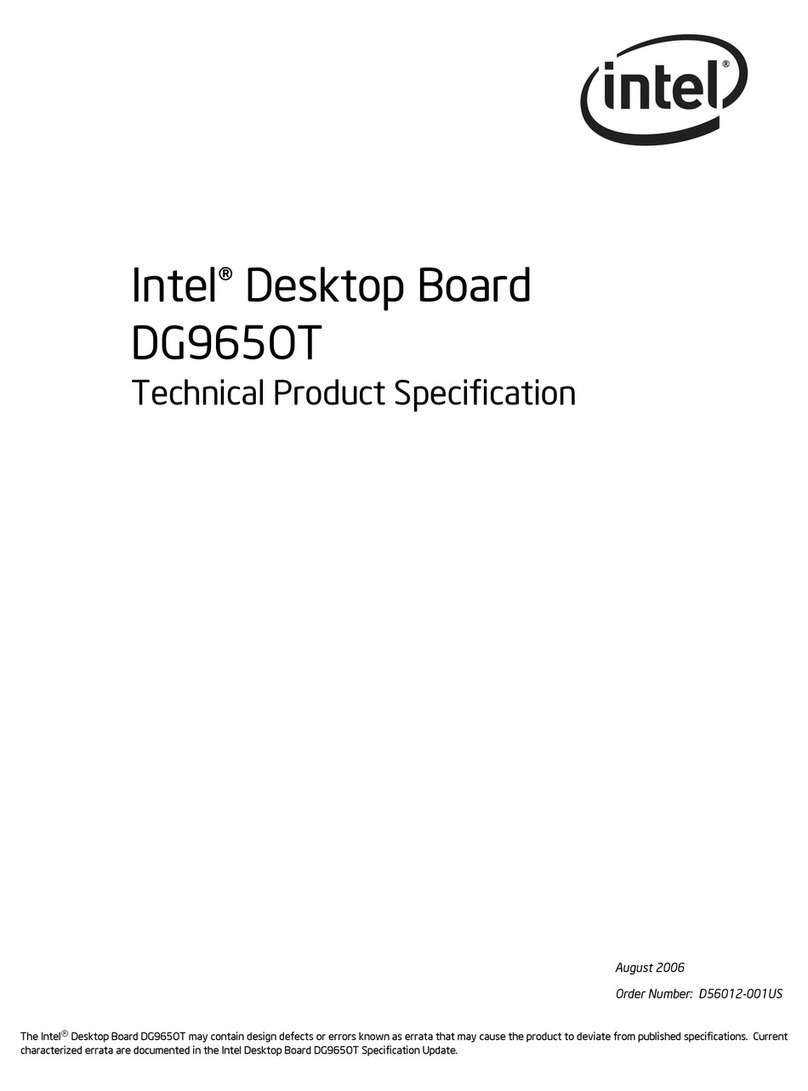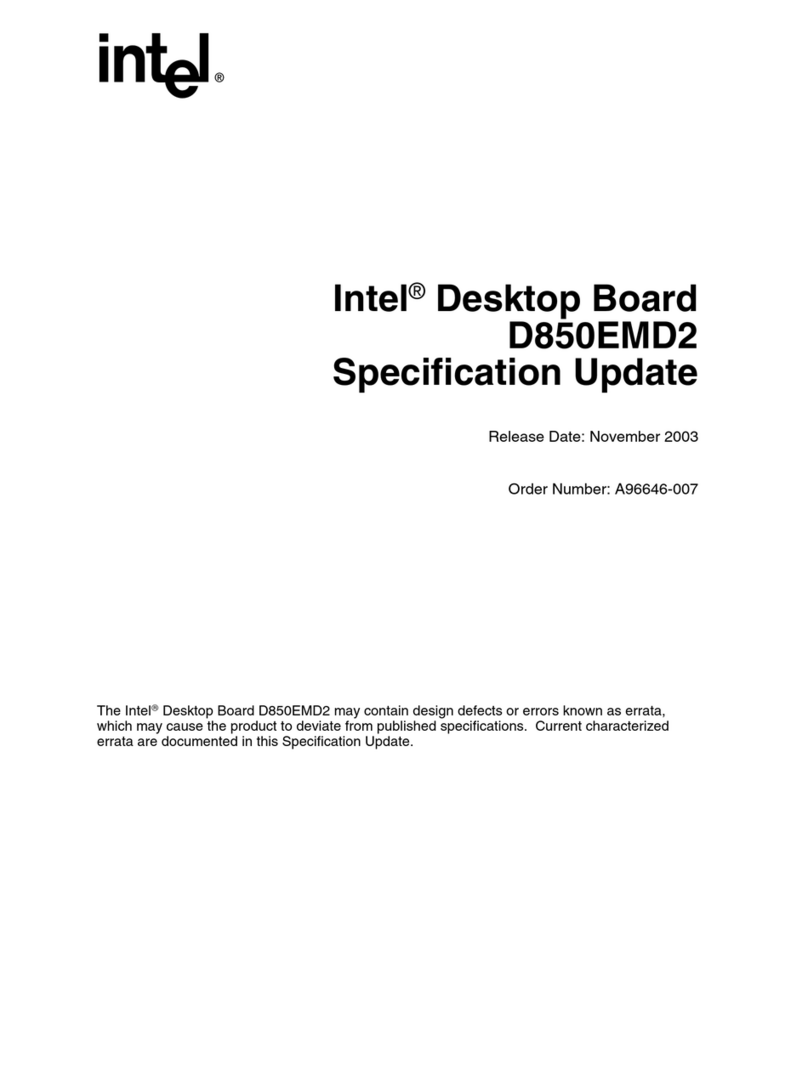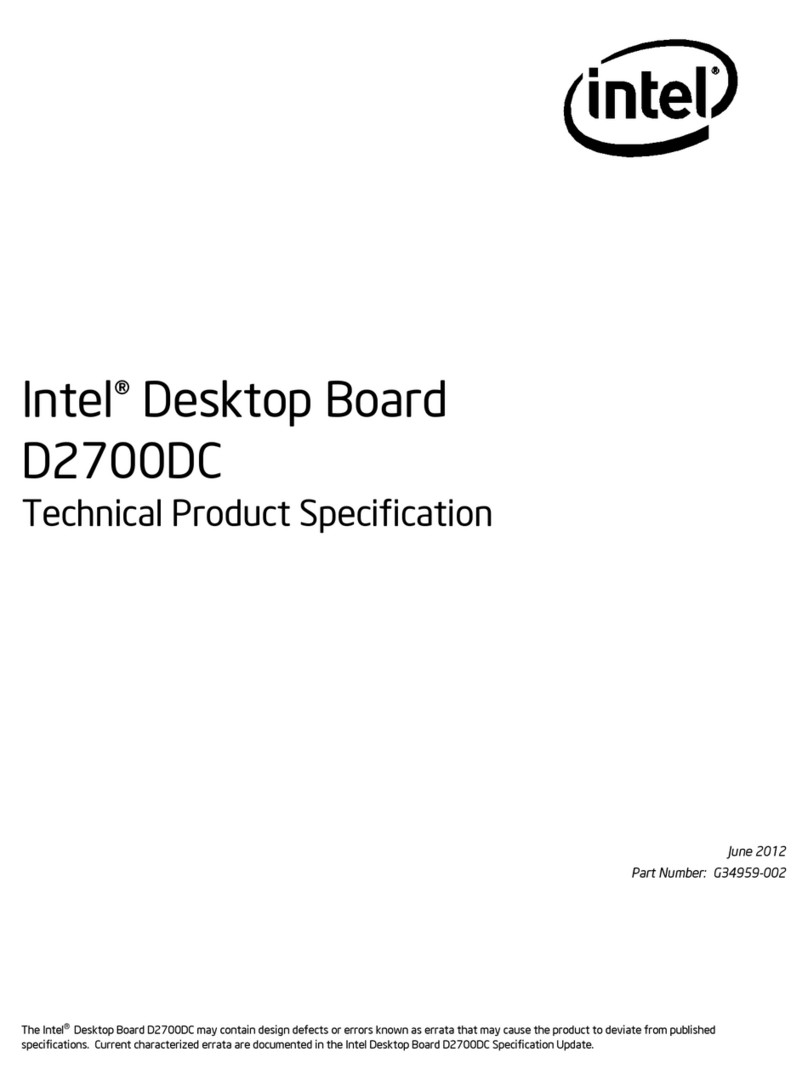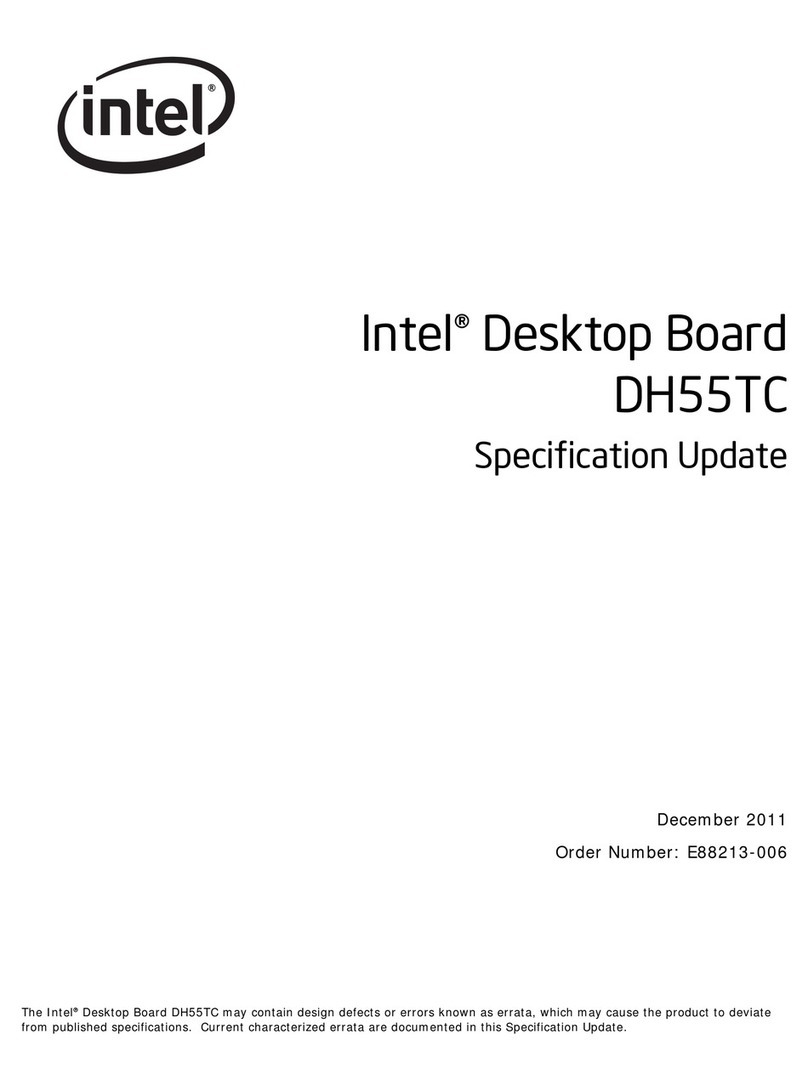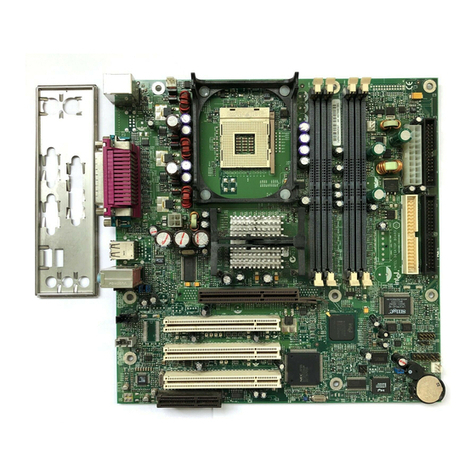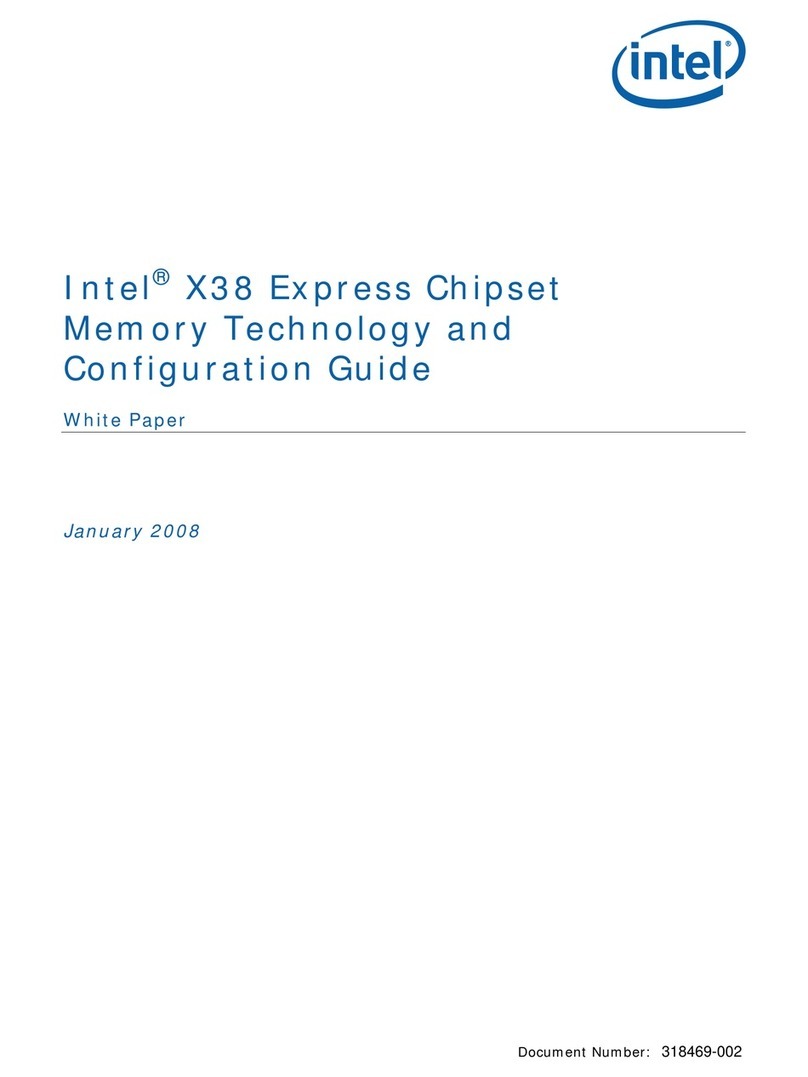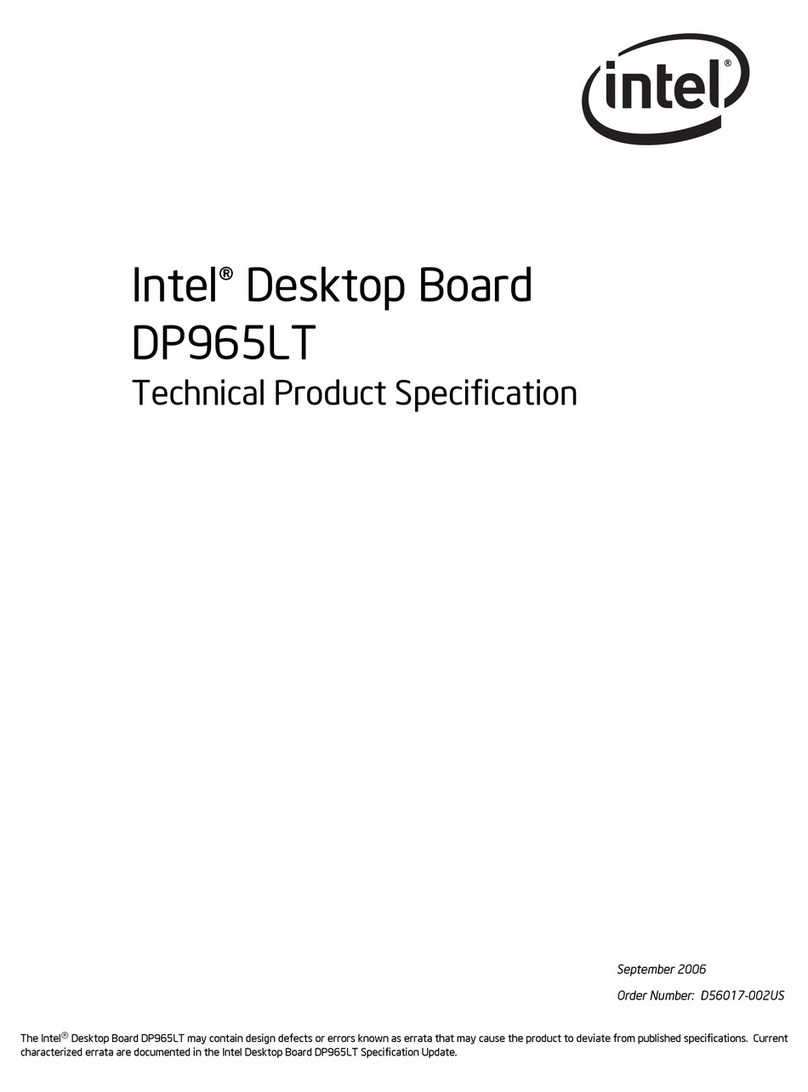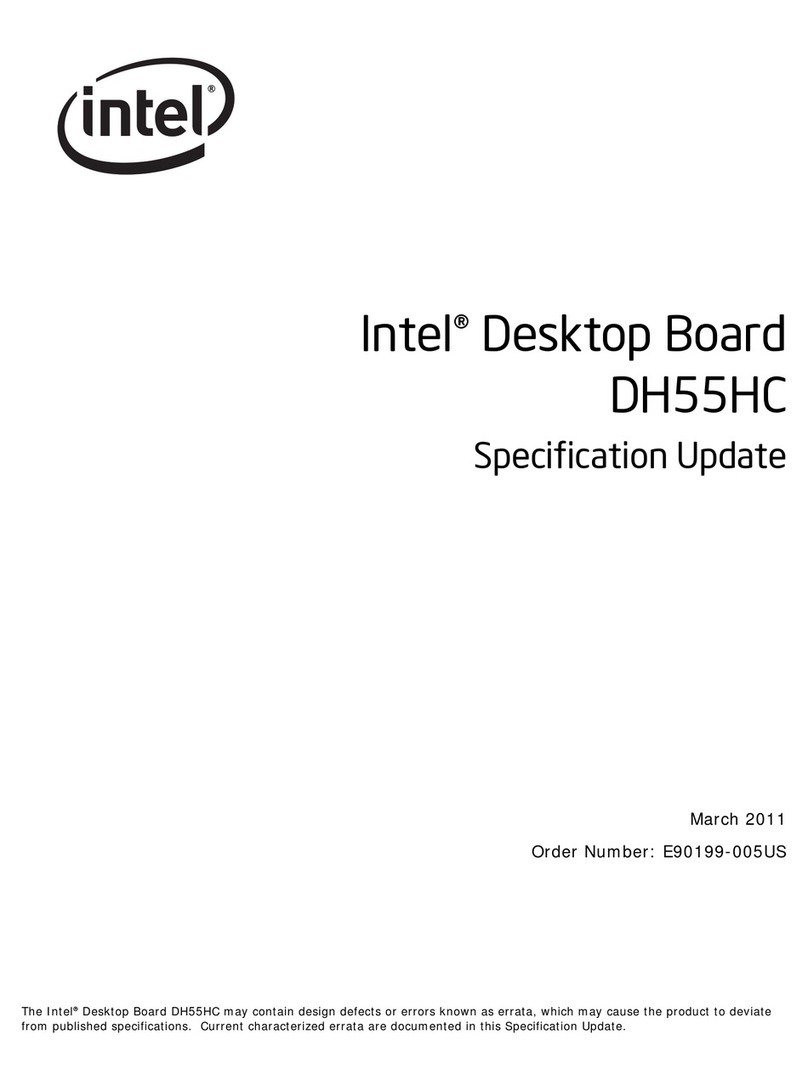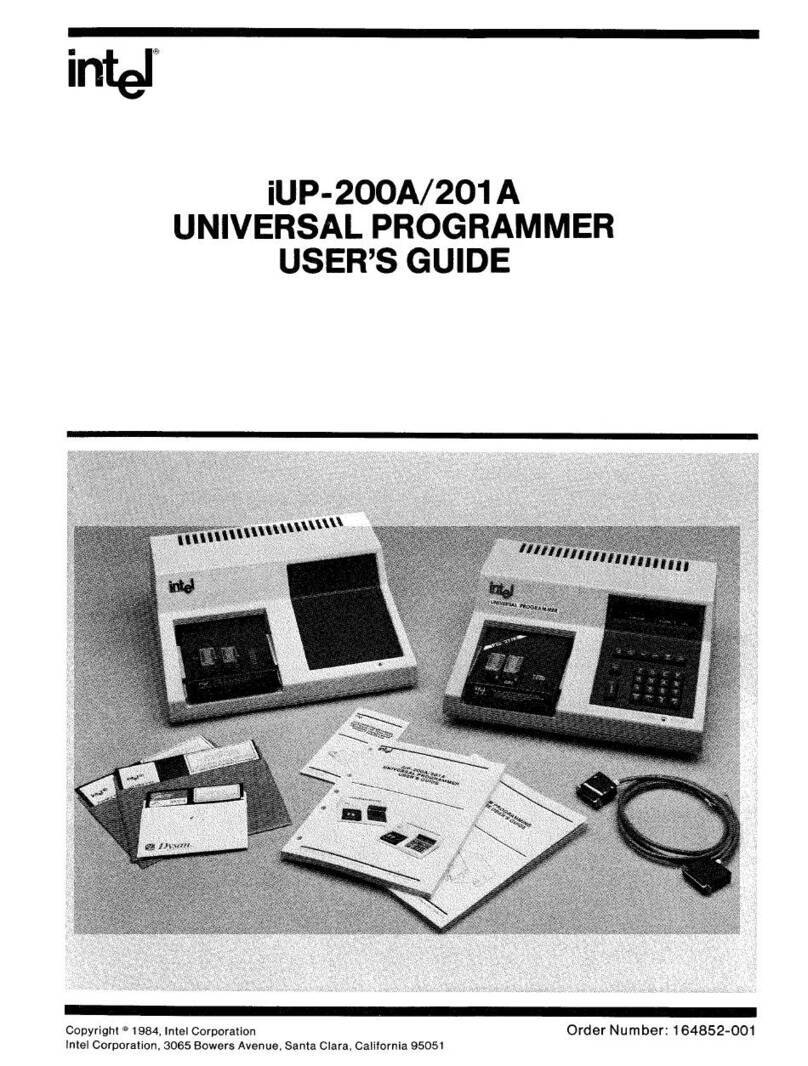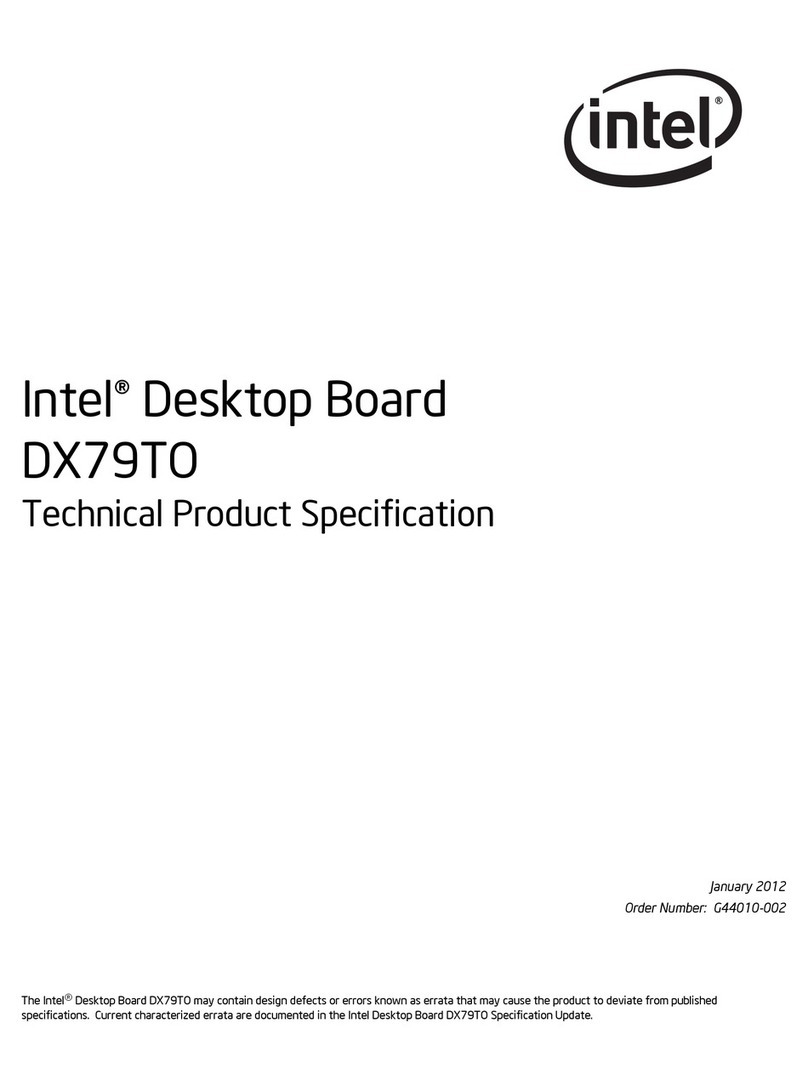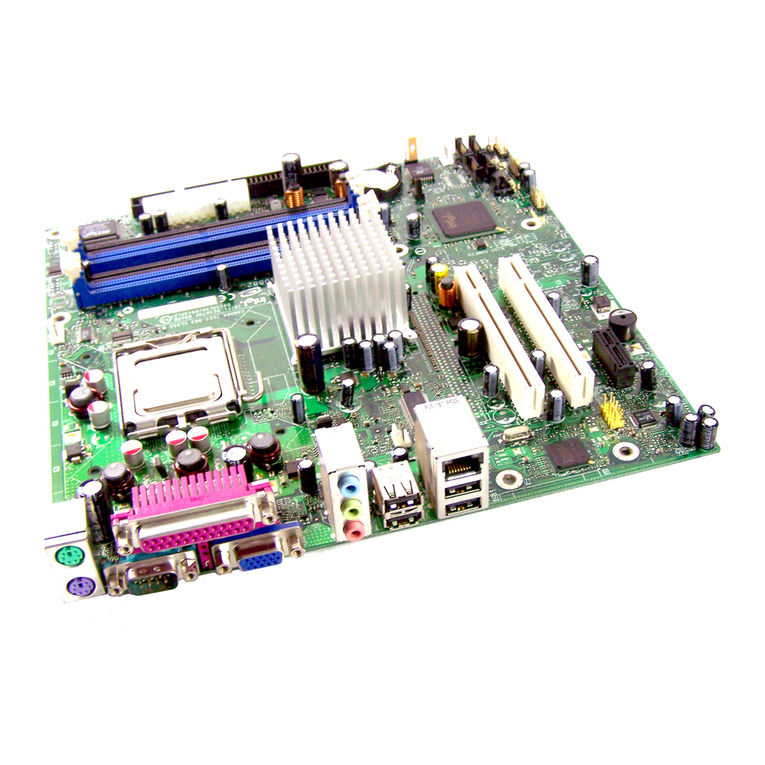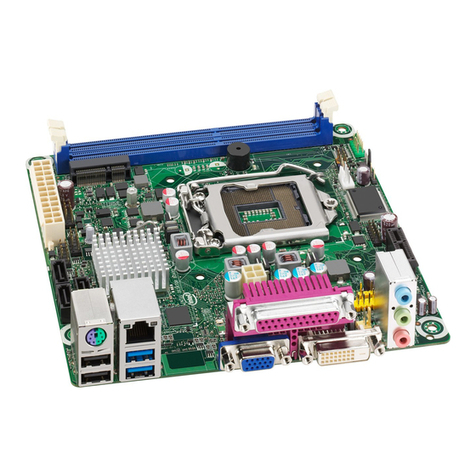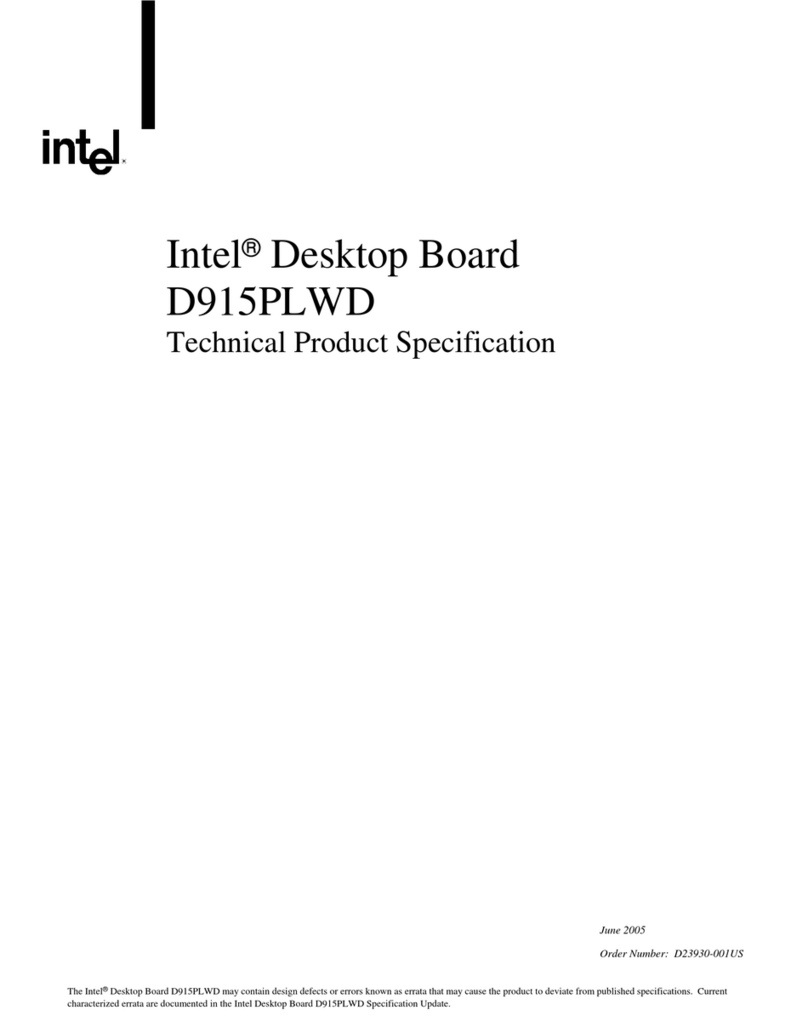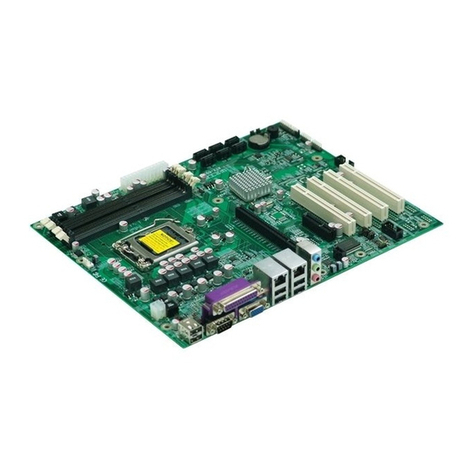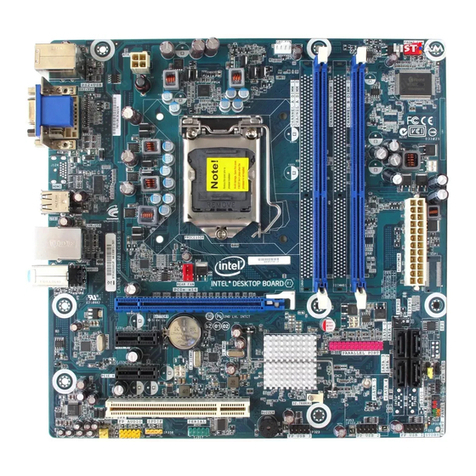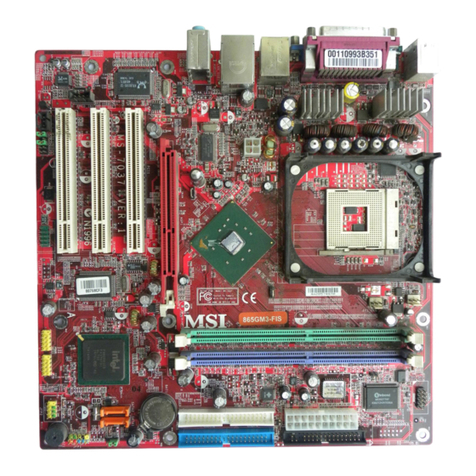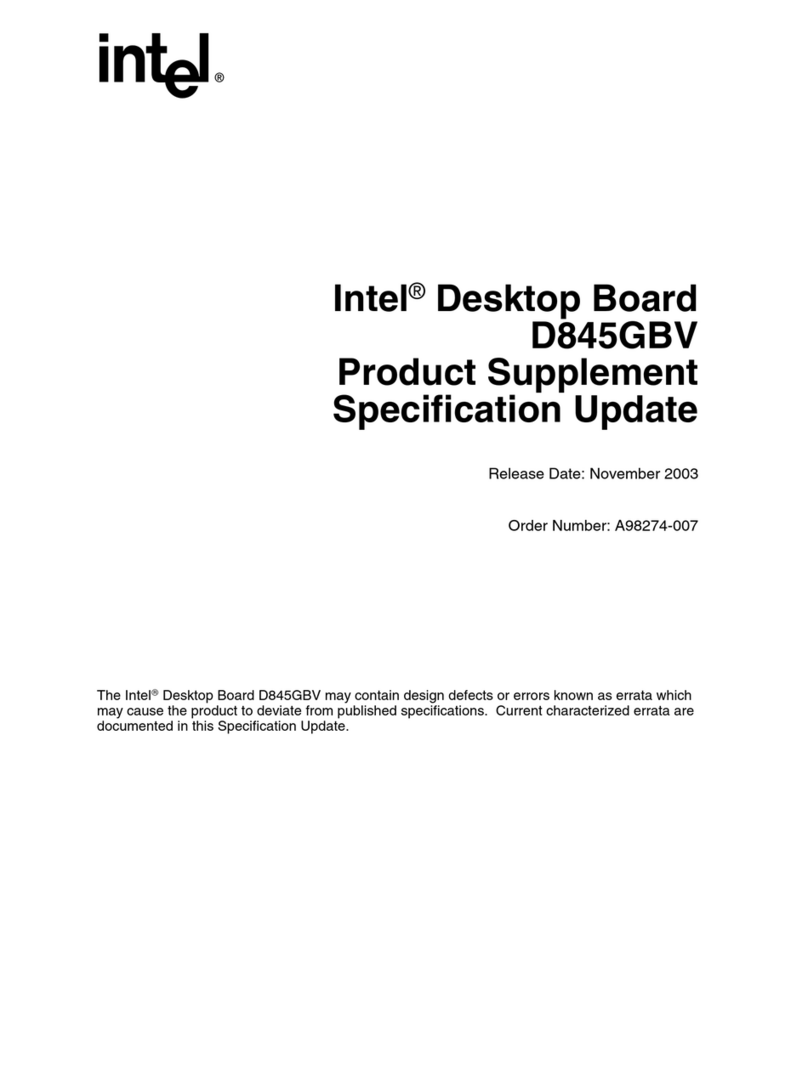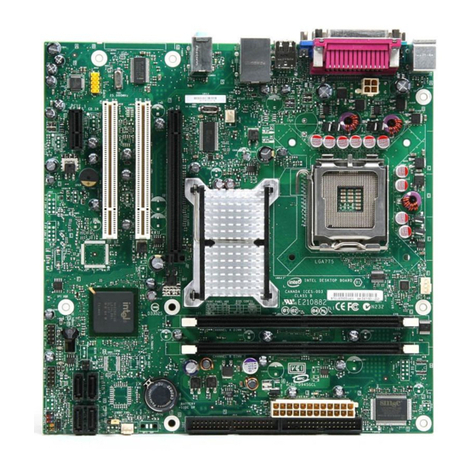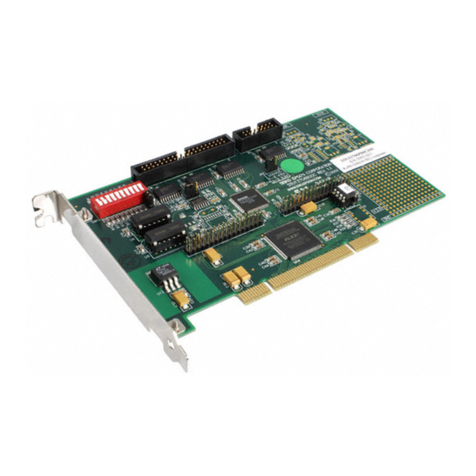
Intel Desktop Board DH77KC Technical Product Specification
viii
2.4Mechanical Considerations ................................................................ 60
2.4.1Form Factor......................................................................... 60
2.5Electrical Considerations................................................................... 61
2.5.1Power Supply Considerations ................................................. 61
2.5.2Fan Header Current Capability................................................ 62
2.5.3Add-in Board Considerations .................................................. 62
2.6Thermal Considerations.................................................................... 62
2.7Reliability ....................................................................................... 65
2.8Environmental ................................................................................ 65
3Overview of BIOS Features
3.1Introduction ................................................................................... 67
3.2BIOS Flash Memory Organization....................................................... 68
3.3Resource Configuration .................................................................... 68
3.3.1PCI Express Autoconfiguration................................................ 68
3.4System Management BIOS (SMBIOS)................................................. 69
3.5Legacy USB Support ........................................................................ 69
3.6BIOS Updates ................................................................................. 70
3.6.1Language Support ................................................................ 70
3.6.2Custom Splash Screen .......................................................... 71
3.7BIOS Recovery................................................................................ 71
3.8Boot Options................................................................................... 72
3.8.1Optical Drive Boot ................................................................ 72
3.8.2Network Boot....................................................................... 72
3.8.3Booting Without Attached Devices .......................................... 72
3.8.4Changing the Default Boot Device During POST ........................ 72
3.9Adjusting Boot Speed....................................................................... 73
3.9.1Peripheral Selection and Configuration .................................... 73
3.9.2BIOS Boot Optimizations ....................................................... 73
3.10BIOS Security Features .................................................................... 74
3.11BIOS Performance Features .............................................................. 75
4Error Messages and Beep Codes
4.1Speaker ......................................................................................... 77
4.2BIOS Beep Codes ............................................................................ 77
4.3Front-panel Power LED Blink Codes
.................................................... 77
4.4BIOS Error Messages ....................................................................... 78
4.5Port 80h Power On Self Test (POST) Codes ......................................... 79
5Regulatory Compliance and Battery Disposal Information
5.1Regulatory Compliance..................................................................... 85
5.1.1Safety Standards ................................................................. 85
5.1.2European Union Declaration of Conformity Statement................ 86
5.1.3Product Ecology Statements .................................................. 87
5.1.4China RoHS ......................................................................... 90
5.1.5EMC Regulations .................................................................. 91
